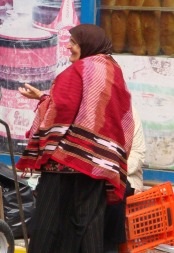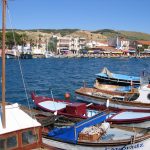According to the World Bank, the population of Turkey was 85 million in 2022. Roughly 75% of the population now lives in towns, with the largest numbers in İstanbul (16 million officially), Ankara, İzmir, Bursa and Adana.
The majority of the population are Turks although there are thought to be around 12 million Kurds, mainly in the southeast of the country but increasingly dispersed around the big cities too. Ninety-eight per cent of the population are Muslims, mainly of the Sunni variety, although some sources estimate the minority Alevi population at up to 20 million. There is also a tiny Shiite population.
The minority populations
In Turkey it’s the Kurds who tend to grab all the attention when it comes to the minority populations but the country is also home to a number of other minorities.
THE LAZ
North-eastern Turkey is home to a group of people called the Laz. Not a great deal is known about them but they probably migrated into what is now Turkey from Caucasia, setting up their own kingdom here in the third century AD.
The Laz have their own language which is more closely related to Georgian than to Turkish, and they’re well-known for their love of falconry, for playing a three-stringed violin called the kemençe and for the over-enthusiastic building of concrete apartment blocks.
Once upon a time Laz men were also renowned for their ferocity which made them especially popular as bodyguards. Today visitors are more likely to comment on the glorious maroon, black and white striped shawls, called keşans, worn by older Laz women.
Lazland consists of five small coastal towns west of Rize – Pazar, Ardeşen,Fındıklı, Arhavi and Hopa– although these days there’s precious little undeveloped land in between them.
THE HEMŞİN
The north-east is also home to the Hemşin people who tend to live higher up in the mountains instead of along the coast. Their origins, too, are shrouded in mystery although the fact that their language has links with Armenian suggests that they may have arrived here from Armenia. They are thought to have been Christian until the 17th century although no churches survive to confirm that fact.
Hemşin men are known for their skill as pastry cooks and are the owners of many of the country’s patisseries. Hemşin women stride confidently about the villages clad in their colourful poşi headscarfs which they twist around their heads over flimsy black scarves decorated with oya or coins. Originally black and gold were the favoured colours for their scarves although these days anything seems to go. Whereas the Laz keşan was always made locally the poşis are imported from Syria and Iran. They’re far more assertive in their identity than many Turkish women.
Ayder is the heart of Hemşin country. Come here to listen to men playing the tulum (bagpipes) and perhaps to join them in a game of cards or Okey.
According to the World Bank, the population of Turkey was 73.5 million in 2011. Roughly 75% of the population now lives in towns, with the largest numbers in İstanbul (13 million officially), Ankara, İzmir, Bursa and Adana.
The majority of the population are Turks although there are thought to be around 12 million Kurds, mainly in the southeast of the country but increasingly dispersed around the big cities too. Ninety-eight per cent of the population are Muslims, mainly of the Sunni variety, although some sources estimate the minority Alevi population at up to 20 million. There is also a tiny Shiite population.
The minority populations
In Turkey it’s the Kurds who tend to grab all the attention when it comes to the minority populations but the country is also home to a number of other minorities.
THE LAZ
North-eastern Turkey is home to a group of people called the Laz. Not a great deal is known about them but they probably migrated into what is now Turkey from Caucasia, setting up their own kingdom here in the third century AD.
The Laz have their own language which is more closely related to Georgian than to Turkish, and they’re well-known for their love of falconry, for playing a three-stringed violin called the kemençe and for the over-enthusiastic building of concrete apartment blocks.
Once upon a time Laz men were also renowned for their ferocity which made them especially popular as bodyguards. Today visitors are more likely to comment on the glorious maroon, black and white striped shawls, called keşans, worn by older Laz women.
Lazland consists of five small coastal towns west of Rize – Pazar, Ardeşen, Fındıklı, Arhavi and Hopa – although these days there’s precious little undeveloped land in between them.
THE HEMŞİN
The north-east is also home to the Hemşin people who live higher up in the mountains. Their origins, too, are shrouded in mystery although the fact that their language has links with Armenian suggests that they may have arrived here from Armenia. They are thought to have been Christian until the 17th century although there no churches survive to confirm that fact.
Hemşin men are known for their skill as pastry cooks and are the owners of many of the country’s patisseries. Hemşin women stride confidently about the villages clad in their colourful poşi headscarfs which they twist around their heads over flimsy black scarves decorated with oya or coins. Originally black and gold were the favoured colours for their scarves although these days anything seems to go. Whereas the Laz keşan was always made locally the poşis are imported from Syria and Iran. They’re far more assertive in their identity than many Turkish women.
Ayder is the heart of Hemşin country. Come here to listen to men playing the tulum (bagpipes) and perhaps to join them in a game of cards or Okey.

